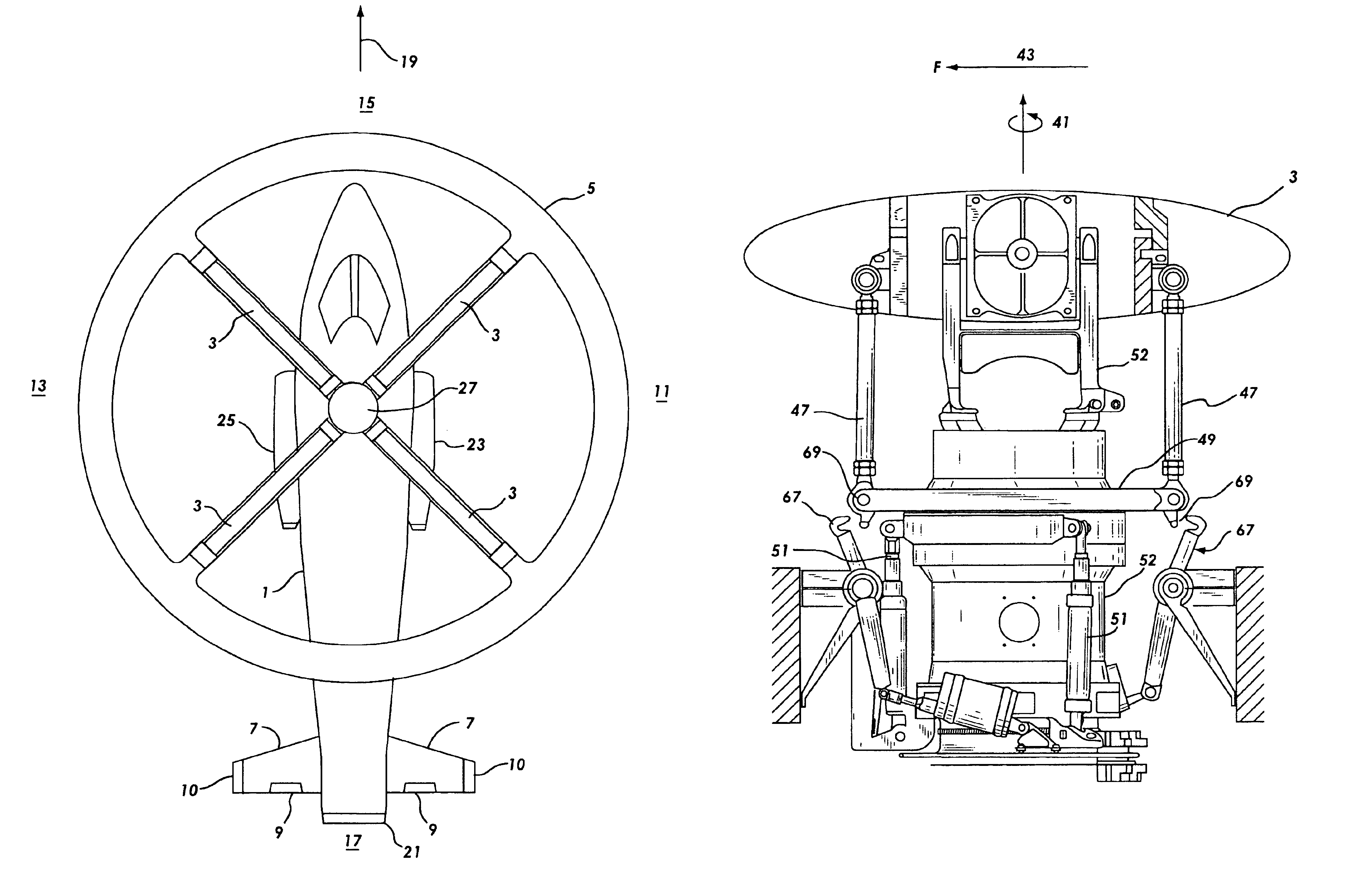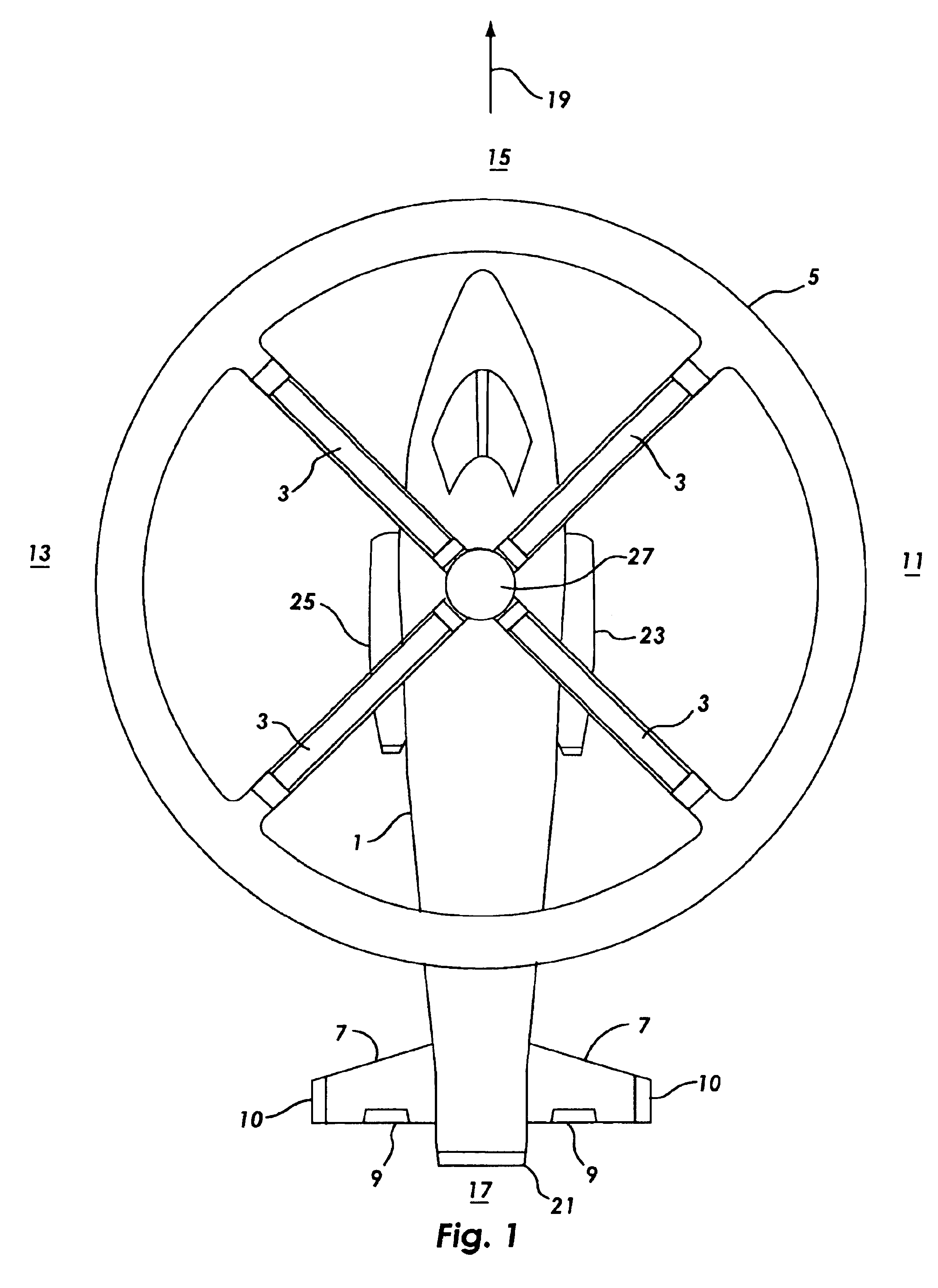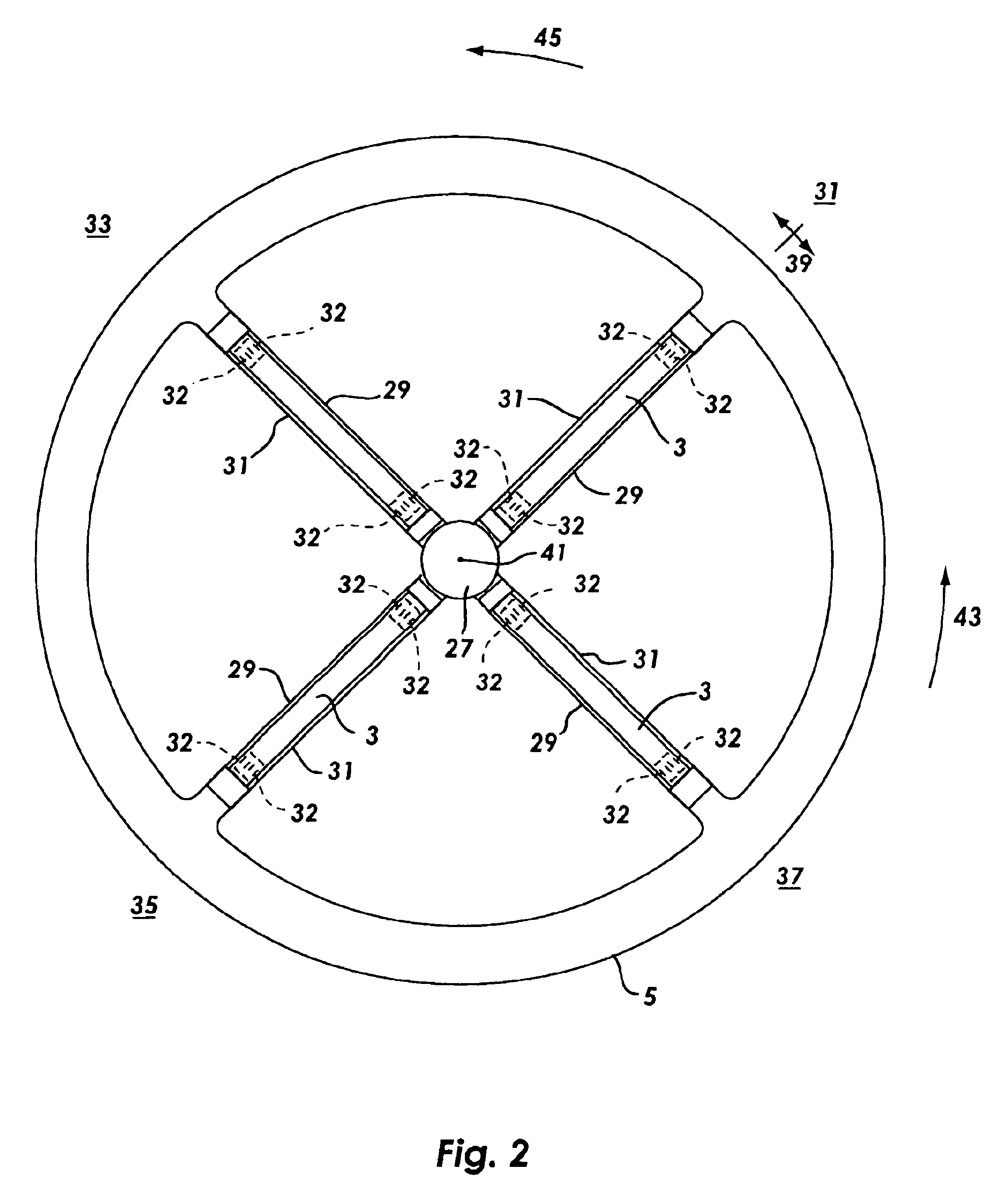Rotary/fixed wing aircraft
a fixed-wing aircraft and rotor blade technology, which is applied in the field of hybrid aircraft, can solve the problems of stalling of the retreating rotor blade in high-speed forward flight, inability to provide control or lift to the aircraft, and failure to achieve the development of functional hybrid aircraft capable of carrying a plurality of passengers with a substantial payload, etc., and achieves rapid control, fast reaction time, and increased strength
- Summary
- Abstract
- Description
- Claims
- Application Information
AI Technical Summary
Benefits of technology
Problems solved by technology
Method used
Image
Examples
Embodiment Construction
The drawing figures are intended to illustrate the general manner of design and construction of the invention, and are not to scale. References, in the description and in the claims, to left, right, front, back and the like are used for descriptive purposes, and should not be misinterpreted as to limit the scope of the claims or invention. It shall be understood that the embodiment of the invention as described is capable of operation in other orientations than described or shown.
FIG. 1 illustrates an aircraft fuselage 1 equipped with an embodiment of the present invention comprised of rotor blades 3 of which any single rotor blade extends from rotating hub 27 to an annular wing 5. A horizontal stabilizer 7, elevators 9, and vertical stabilizers 10 on the fuselage 1 are common fixed wing aircraft embodiments. Aircraft directional references are right 11, left 13, nose 15, and tail 17. A longitudinal axis 19 extends lengthwise through the fuselage 1. A fan tail 21 or vectoring thrust...
PUM
 Login to View More
Login to View More Abstract
Description
Claims
Application Information
 Login to View More
Login to View More - R&D
- Intellectual Property
- Life Sciences
- Materials
- Tech Scout
- Unparalleled Data Quality
- Higher Quality Content
- 60% Fewer Hallucinations
Browse by: Latest US Patents, China's latest patents, Technical Efficacy Thesaurus, Application Domain, Technology Topic, Popular Technical Reports.
© 2025 PatSnap. All rights reserved.Legal|Privacy policy|Modern Slavery Act Transparency Statement|Sitemap|About US| Contact US: help@patsnap.com



